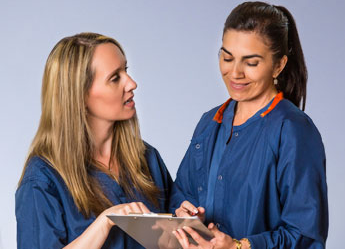
As you may be aware in January 2017 the latest changes to the Echo and Vascular accreditation standards as set forth by the Intersocietal Accreditation Commission become effective. We have discussed the changes to the Quality Improvement Program in recent blogs. In this blog we will cover the changes to the sonographer credentialing and training requirements.
The latest standards state that by January 31, 2017, all echo and vascular technical staff must have obtained an appropriate credential. This applies to all accredited facilitates in order to remain compliant with IAC Standards. We have received many phone calls and questions regarding how to handle this requirement. “Does IAC really expect everyone to be credentialed?” “What happens to our sonographers that are not credentialed?”
To answer this I think it’s important to review the history of IACs position on technical staff requirements. As far back as 2010, the Intersocietal Accreditation Commission recommended that all staff members acquire an appropriate credential within two years of completing their experience and training pathway. The 2010 Standards stated that “By 2014, the laboratory must have a process in place to ensure that all sonographers become credentialed.” This was followed up in 2015 with new standards that stated “The facility must have a process in place to ensure that all sonographers become credentialed. Finally, by January 31, 2017, all technical staff (echocardiography, vascular) must have obtained an appropriate credential.”
This was not something that caught our industry off guard. IAC started as early back as 2010 to create a pathway to credentialing. So to answer the questions asked by many labs of whether or not sonographers really do have to be credentialed by January of 2017 to remain compliant within an accredited facility….the answer is YES! In regards to how you handle this…. that is up to each and every facility to decide best practices for enforcing a requirement we have all known about for many years. We recommend having the echo and vascular departments reach out to their human resource departments, managers and administrators. This way, you can discuss the best process for your individual facility.
There are two exceptions to the required credentialing requirements to accommodate new graduates and sonographers that are cross training. Without these accommodations it would be impossible for new grads and sonographers cross training to meet the clinical requirements required in order to sit for their credentialing exam.
These individuals are only allowed to work under appropriate supervision of a credentialed sonographer and must be listed on the IAC accreditation application as provisional technical staff.
A new graduate of an ultrasound program (cardiac, vascular) has one year to obtain their credentials. Thus, new graduates must obtain this within one year from their date of graduation.
Individuals who are cross-training in echocardiography or vascular and working to fulfill clinical experience prerequisites for a credentialing examination must obtain an appropriate credential within two years from the start date of training.
On a personal note, I am passionate about raising the standards of diagnostic imaging. I am relieved to have some additional external factor motivating credentialing. Credentialing helps our industry to be taken seriously by other healthcare professionals. In addition, it helps advance our knowledge and expertise.
We truly love what we do and enjoy sharing this with sonographers nationwide with all levels of knowledge. From the novice sonographer to the experienced lead sonographer there is always something to learn. We are happy to develop clinical development programs for your facility. CardioServ always include education and clinical development with our accreditation services.




Oct
2016
Oct
2016
Nov
2016
Oct
2016
Oct
2016
Oct
2017
Nov
2016
Nov
2016
Nov
2016
May
2018
May
2018